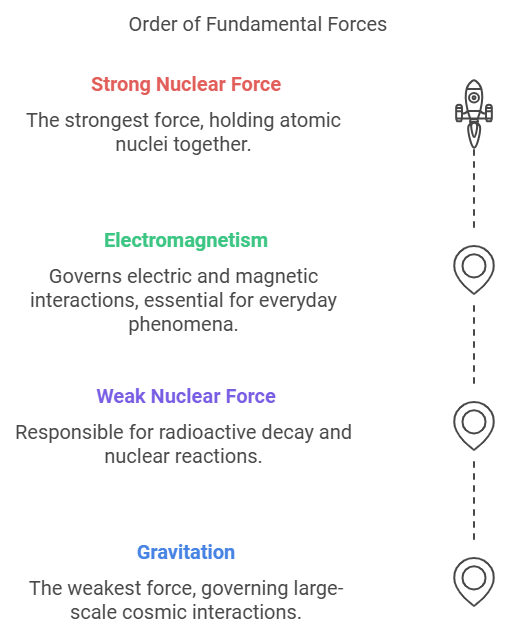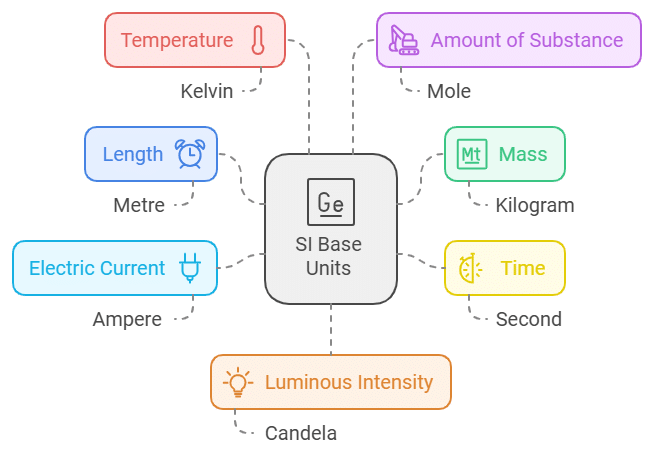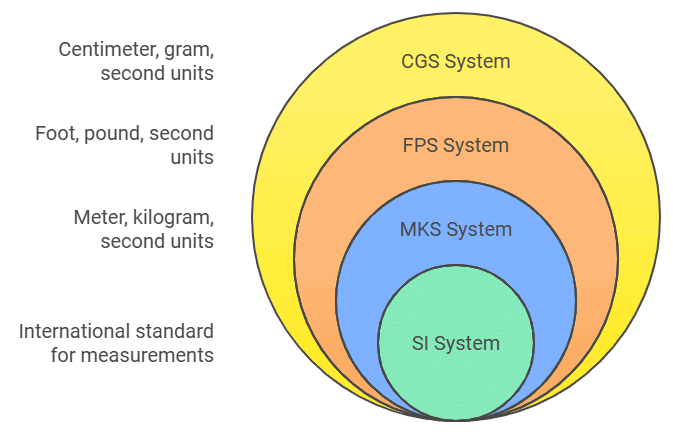Mnemonics: Physical World And Units & Measurements | Physics Class 6 ICSE PDF Download
| Table of contents |

|
| 1. Physical World |

|
| 2. Seven Fundamental Quantities |

|
| 3. Systems of Units |

|
| 4. Applications of Dimensional Analysis |

|
| 5. Two Supplementary Units |

|
| 6. Scientific Notation |

|
MNEMONICS are powerful tools to simplify complex physics concepts and make learning easier.

This edurev document provides creative and concise mnemonics to help students quickly grasp and recall key topics. Use them to make your study sessions more efficient and effective! Happy Learning!

1. Physical World
Mnemonic: "Good Workers work for Extended Session"
Explanation:
- Good: Gravitation
- Workers: Weak Nuclear Force
- Extended: Electromagnetism
- Session: Strong Nuclear Force
Strength wise arrangement of fundamental forces in ascending order:
Gravitation < Weak Nuclear Force < Electromagnetism < Strong Nuclear Force
The order should be learn as can be asked in conceptual based questions.

2. Seven Fundamental Quantities
Mnemonic: "Let My Time Always Keep Me Calm"
Explanation:
- Let: Length - Metre (m)
- My: Mass - Kilogram (kg)
- Time: Time - Second (s)
- Always: Electric Current - Ampere (A)
- Keep: Thermodynamic Temperature - Kelvin (K)
- Me: Amount of Substance - Mole (mol)
- Calm: Luminous Intensity - Candela (cd)
Helpful in solving dimensional analysis questions.

3. Systems of Units
Mnemonic: "Can Frogs Make Sandwiches?"
Explanation:
- C - CGS System (Centimeter, Gram, Second)
- F - FPS System (Foot, Pound, Second)
- M - MKS System (Meter, Kilogram, Second)
- S - SI System (International Standard System)

4. Applications of Dimensional Analysis
Mnemonic: "Daring Cats Climb Down"
Explanation:
- Daring - Derive relationships
- Cats- Check correctness of equations
- Climb - Convert units
- Down - Deduce formulas
A method for solving all the numericals of dimensional analysis.

5. Two Supplementary Units
Mnemonic: "Ravi Smiles"
Explanation:
- Ravi - Radian (Plane Angle)
- Smiles - Steradian (Solid Angle)

6. Scientific Notation
Mnemonic: "Power Saves Time!"
Explanation:
- Use powers of 10 to represent very large or small numbers concisely.
MASTER THESE SHORTCUTS, AND LET SUCCESS FOLLOW!
|
8 videos|51 docs|6 tests
|
FAQs on Mnemonics: Physical World And Units & Measurements - Physics Class 6 ICSE
| 1. What are the seven fundamental quantities in physics? |  |
| 2. How do systems of units differ from each other? |  |
| 3. What is dimensional analysis and how is it applied? |  |
| 4. What are the two supplementary units in the SI system? |  |
| 5. How does scientific notation benefit measurements in physics? |  |




















